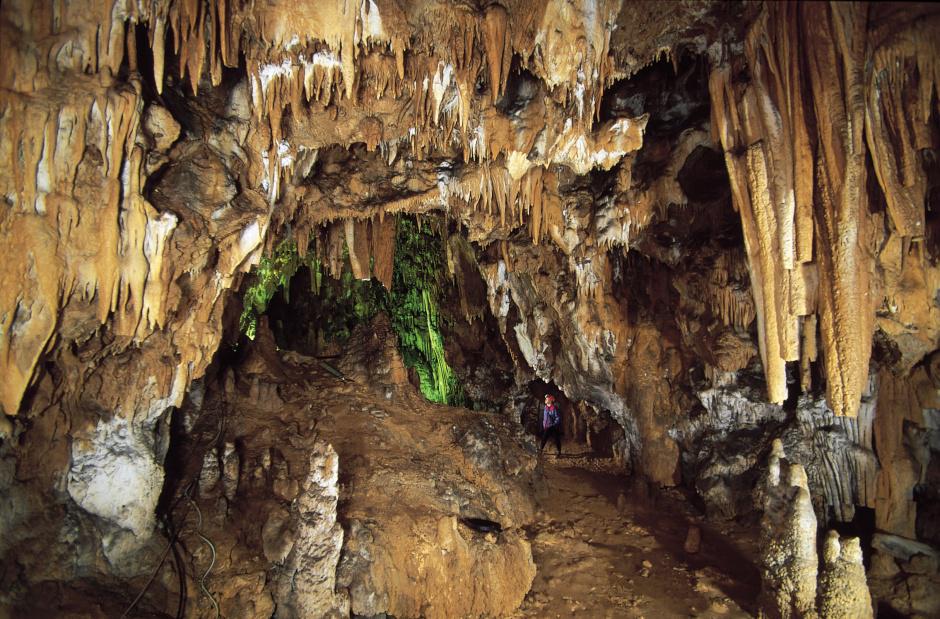
Babji Zob, a tooth-like crag on a cliff not far from the resort town of Bled, was created when a witch fell down the cliff and cast a spell on the mountain – at least that’s how a local legend explains the origin of the name, which means "Hag’s Tooth" in Slovenian. Below the crag, however, lies a mysterious cave that is, in many ways just as magical.
Lying at an altitude of approximately 1000 meters, the cave is only accessible by taking a hike up a forest path. But those who make the journey are rewarded with a visit to a captivating underground world. While the Cave Under Babji Zob cannot match some of Slovenia’s more famous caves in terms of size, it offers some uniquely captivating sights.
Among them are helical, twig-like stalactites known as helictites, and intricate calcite crystals that form unique, ice-like patterns. Both features are rarely found in Slovenian caves.
The Cave Under Babji Zob also teems with life. In addition to bats and various insects, it is also the home of an endemic type of centipede, as well as anaphthalmus hitleri – a beetle named after Adolf Hitler.
The cave was formed several millennia ago by the Sava River, which once flowed hundreds of meters above its current bed. Since the 19th century, the Cave Under Babji Zob has been managed by the Bled Speleological Society. Over the years, its members have secured the cave for visits and equipped it with electrical illumination. It was once a major attraction in the area, and elite visitors who had traveled to Lake Bled for health reasons would hire local guides to take them into the cave’s depths. Unfortunately, many broke off stalactites and took them home; parts of the cave also became covered in soot from handheld torches.
Since then, the cave has retreated into relative obscurity, but local authorities still organize weekly tours in the summer – or by prior arrangement. This gives visitors to Bled a chance to explore the mysteries of one of Slovenia’s most interesting but least-known caves.

































































